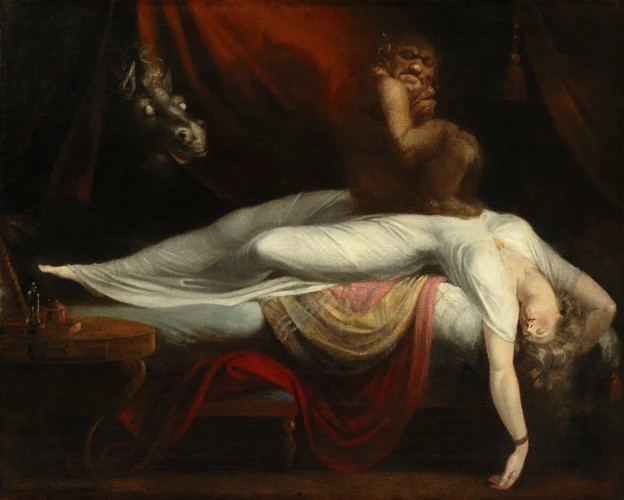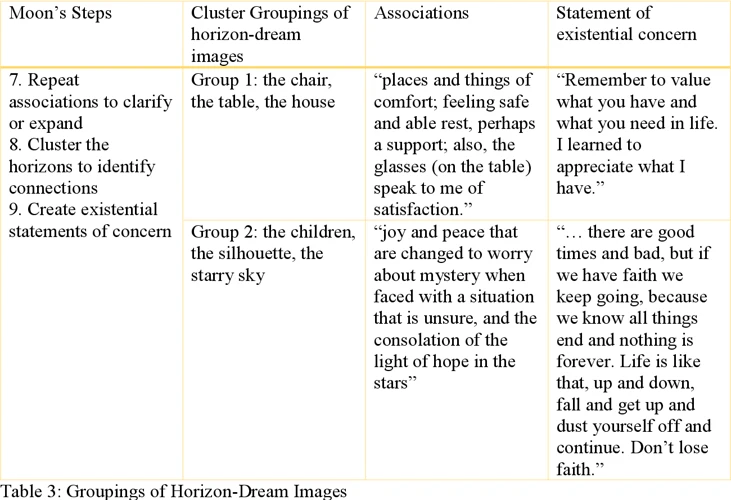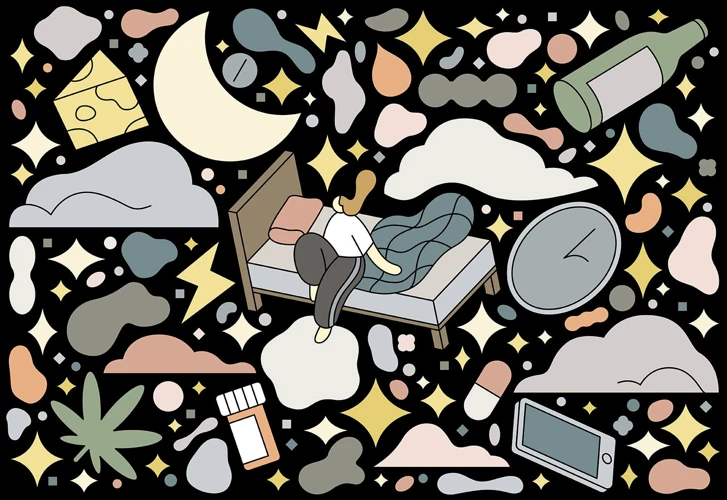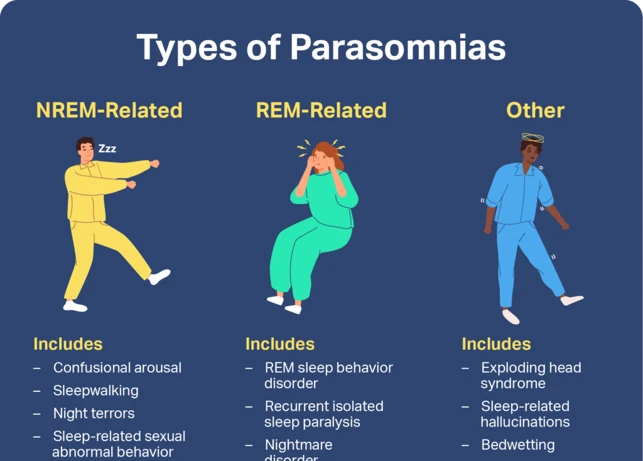Sleep paralysis is a phenomenon that both fascinates and terrifies those who experience it. It is characterized by a temporary inability to move or speak while falling asleep or waking up. It often lasts for just a few seconds or minutes but can leave a lasting psychological impact. While sleep paralysis is considered a sleep disorder in its own right, it is also closely linked to other sleep disorders such as insomnia, narcolepsy, and sleep apnea. Understanding the connection between these disorders can provide valuable insights into the causes and potential treatment options for those who suffer from sleep paralysis.
Sleep Paralysis: Definition and Causes

Sleep paralysis is a sleep disorder characterized by a temporary inability to move or speak during the process of falling asleep or waking up. It occurs when the body is transitioning between different stages of sleep, particularly during rapid eye movement (REM) sleep. During this stage, the brain is highly active, and dreams often take place. Normally, the body is effectively paralyzed during REM sleep to prevent acting out dreams; however, in individuals with sleep paralysis, this paralysis continues even after waking up. The exact causes of sleep paralysis are still being studied, but there are several factors that have been identified as potential triggers. These include sleep deprivation, irregular sleep schedules, stress, anxiety, and certain sleep disorders such as narcolepsy. Additionally, there seems to be a genetic component to sleep paralysis, with some studies suggesting that individuals with a family history of the disorder may be more prone to experiencing it. Understanding the definition and causes of sleep paralysis is crucial in order to develop effective treatments and strategies for managing this often frightening and disruptive sleep disorder.
Common Sleep Disorders

Sleep disorders are prevalent among individuals worldwide, and they can have a significant impact on overall health and well-being. Insomnia is one such common sleep disorder, characterized by difficulty falling asleep or staying asleep, leading to inadequate rest. It can be caused by various factors such as stress, anxiety, or certain medical conditions. Narcolepsy is another sleep disorder characterized by excessive daytime sleepiness and sudden, uncontrollable episodes of falling asleep. It is caused by a dysfunction in the brain’s ability to regulate sleep-wake cycles. Sleep apnea, on the other hand, is a disorder where breathing repeatedly stops and starts during sleep. It can lead to frequent awakenings throughout the night and can have serious health consequences if left untreated. These common sleep disorders, along with others such as restless legs syndrome and parasomnias, can often be interconnected. For example, sleep paralysis has been found to have associations with both narcolepsy and sleep apnea. Understanding the various sleep disorders and their relationships is vital in determining appropriate diagnosis and treatment strategies for individuals who suffer from sleep paralysis.
Insomnia
Insomnia is a sleep disorder characterized by difficulty falling asleep, staying asleep, or experiencing non-restorative sleep. It is a common sleep disturbance that can have a significant impact on daily functioning and overall well-being. People with insomnia often complain of feeling tired and fatigued during the day, having difficulty concentrating, and experiencing mood disturbances. Insomnia can be caused by various factors, including stress, anxiety, medications, and medical conditions. The relationship between sleep paralysis and insomnia is complex, as they often coexist and can exacerbate each other’s symptoms. Sleep paralysis can contribute to insomnia by causing fear and anxiety about falling asleep or experiencing episodes of paralysis during sleep. Similarly, the sleep disruptions and poor sleep quality associated with insomnia can increase the likelihood of experiencing sleep paralysis episodes. It is important for individuals with insomnia to address their sleep difficulties through lifestyle modifications, such as practicing good sleep hygiene, maintaining a consistent sleep schedule, and avoiding stimulating activities before bedtime. In some cases, therapy or medication may be necessary to manage insomnia symptoms effectively. By addressing insomnia, individuals may also experience a reduction in the frequency or intensity of sleep paralysis episodes.
Narcolepsy
Narcolepsy is a neurological sleep disorder that is closely linked to sleep paralysis. It is characterized by excessive daytime sleepiness, sudden attacks of sleep, and a loss of muscle control. People with narcolepsy often experience sleep paralysis as they transition between wakefulness and sleep. This connection between narcolepsy and sleep paralysis stems from the underlying disruption in the brain’s ability to regulate sleep-wake cycles and muscle control. The exact cause of narcolepsy is still not fully understood, but it is believed to involve a combination of genetic and environmental factors. Research has shown that individuals with narcolepsy have a deficiency of hypocretin, a chemical in the brain that helps regulate wakefulness and REM sleep. This deficiency may lead to a disruption in the normal transitions between sleep stages, resulting in sleep paralysis episodes. Additionally, narcolepsy is often accompanied by other symptoms such as cataplexy (sudden loss of muscle tone), hallucinations, and disrupted nighttime sleep. Understanding the connection between narcolepsy and sleep paralysis can help healthcare professionals develop targeted treatment plans for individuals with these sleep disorders.
Sleep Apnea
Sleep apnea is a common sleep disorder that often coexists with sleep paralysis. It is characterized by pauses in breathing or shallow breaths during sleep, leading to frequent awakenings and disrupted sleep patterns. These pauses in breathing can occur multiple times throughout the night, sometimes even hundreds of times, causing a significant reduction in the quality of sleep. There are two main types of sleep apnea: obstructive sleep apnea (OSA) and central sleep apnea (CSA). OSA is the more prevalent type and occurs when the airway becomes blocked or partially blocked during sleep, leading to breathing difficulties. CSA, on the other hand, is caused by a malfunction in the brain’s respiratory control center, resulting in the brain failing to signal the muscles to breathe. Both types of sleep apnea can contribute to the development of sleep paralysis. Sleep apnea disrupts the normal sleep cycle, preventing individuals from getting sufficient REM sleep. REM sleep is the stage in which sleep paralysis commonly occurs, so the lack of REM sleep can increase the likelihood of experiencing sleep paralysis episodes. The fragmented sleep caused by sleep apnea can lead to increased fatigue and sleep deprivation, which can further exacerbate the occurrence of sleep paralysis. Understanding the link between sleep apnea and sleep paralysis is essential for effective diagnosis and treatment approaches for individuals suffering from both disorders.
Research on the Connection

Extensive research has been conducted to understand the connection between sleep paralysis and other sleep disorders. One area of focus is the correlation between sleep paralysis and insomnia, a condition characterized by difficulty falling asleep or staying asleep. Studies have shown that individuals with insomnia are more likely to experience sleep paralysis, suggesting a strong link between the two disorders. Additionally, research has explored the relationship between sleep paralysis and narcolepsy, a neurological disorder that causes excessive daytime sleepiness. Many individuals with narcolepsy also experience sleep paralysis, indicating a potential shared underlying mechanism. Investigations have been conducted to examine the association between sleep paralysis and sleep apnea, a condition characterized by pauses in breathing during sleep. It has been found that individuals with sleep apnea are more prone to experiencing sleep paralysis episodes. While the exact nature of the connection between sleep paralysis and other sleep disorders is still being unraveled, this research plays a critical role in understanding the broader context of sleep paralysis and its implications for sleep health and well-being.
Effects on Quality of Sleep

The effects of sleep paralysis on the quality of sleep can be significant and far-reaching. Sleep paralysis episodes often lead to disrupted sleep patterns and frequent awakenings throughout the night. The fear and anxiety associated with experiencing sleep paralysis can also contribute to insomnia and nighttime anxiety, further compromising the overall quality of sleep. Sleep paralysis is known to cause excessive daytime sleepiness, which can significantly impact an individual’s ability to function and concentrate during the day. The fear of experiencing future episodes of sleep paralysis can lead to a vicious cycle of sleep deprivation and anxiety, exacerbating the impact on daytime functioning. Research has shown that individuals who regularly experience sleep paralysis are more likely to report symptoms of depression, anxiety, and impaired overall well-being. It is crucial to address the effects of sleep paralysis on sleep quality to mitigate the potential negative consequences on mental and physical health. Understanding the relationship between sleep paralysis and other sleep disorders can provide valuable insights into the management and treatment options to improve sleep quality and overall well-being.
Management and Treatment Options
Managing and treating sleep paralysis involves a combination of lifestyle changes and therapeutic interventions. Since sleep paralysis is often linked to other sleep disorders, addressing the underlying condition is crucial. Establishing a regular sleep schedule, practicing good sleep hygiene, and managing stress levels can help reduce the frequency and intensity of sleep paralysis episodes. For individuals with severe sleep paralysis or associated sleep disorders, therapy options such as cognitive-behavioral therapy (CBT) or medication may be recommended. CBT can help individuals identify and change negative thought patterns and behaviors related to sleep paralysis, while medication can help regulate sleep cycles and reduce the likelihood of paralysis. It’s important to consult with a healthcare professional to determine the most appropriate treatment plan based on the individual’s specific situation and needs.
Lifestyle Changes
Implementing certain lifestyle changes can be beneficial in managing sleep paralysis and improving overall sleep quality. Here are some strategies that may help:
- Establishing a Consistent Sleep Schedule: Maintaining a regular sleep schedule by going to bed and waking up at the same time each day can regulate your body’s internal clock and promote better sleep.
- Creating a Relaxing Bedtime Routine: Engaging in calming activities before bed, such as reading a book or taking a warm bath, can signal to your body that it’s time to unwind and prepare for sleep.
- Avoiding Stimulants: Limiting or avoiding substances that can interfere with sleep, such as caffeine and nicotine, especially close to bedtime, can help promote more restful sleep.
- Creating a Sleep-Friendly Environment: Ensure that your bedroom is dark, quiet, and at a comfortable temperature to create an optimal sleep environment.
- Managing Stress: Engaging in stress-reducing practices, such as meditation, deep breathing exercises, or journaling, can help alleviate anxiety and promote better sleep.
While these lifestyle changes may not directly address sleep paralysis itself, they can create a more conducive sleep environment, reduce the likelihood of sleep disruptions, and improve overall sleep quality. It is important to remember that sleep paralysis is a complex sleep disorder, and addressing the underlying causes, such as sleep deprivation or anxiety, may require additional interventions. For a more comprehensive understanding of sleep paralysis, its science, and potential connections to lucid dreaming, refer to our article on The Science Behind Sleep Paralysis.
Therapeutic Interventions
There are various therapeutic interventions available to help manage and reduce the occurrence of sleep paralysis. These interventions aim to address the underlying causes and improve overall sleep quality. Here are some commonly used approaches:
1. Medications: In some cases, doctors may prescribe medications such as antidepressants or anti-anxiety drugs to help manage sleep paralysis. These medications can help alleviate symptoms of anxiety and stress, which are often contributing factors to sleep paralysis.
2. Cognitive-behavioral therapy (CBT): CBT is a type of therapy that focuses on changing negative thought patterns and behaviors. It can be beneficial for individuals with sleep paralysis by helping them identify and address any underlying psychological factors that may be contributing to the condition. CBT can also involve relaxation techniques and stress management strategies.
3. Sleep hygiene: Improving sleep hygiene involves adopting healthy sleep habits and routines. This can include maintaining a regular sleep schedule, creating a comfortable sleep environment, avoiding stimulants like caffeine and nicotine close to bedtime, and practicing relaxation techniques before sleep. By prioritizing good sleep practices, individuals with sleep paralysis may experience fewer episodes.
4. Stress management: Since stress is a common trigger for sleep paralysis, finding effective ways to manage stress can be beneficial. This may involve activities such as exercise, meditation, deep breathing exercises, journaling, or seeking support from a therapist or support group.
5. Sleep position adjustments: Some individuals find that changing their sleep position can help reduce the likelihood of experiencing sleep paralysis. Sleeping on the side or using extra pillows to elevate the upper body slightly may be worth trying.
It is important to note that the effectiveness of therapeutic interventions can vary from person to person. Consulting with a healthcare professional or sleep specialist is recommended to determine the most appropriate treatment approach based on individual circumstances and needs.
Research has shown that certain techniques, such as lucid dreaming, may also be helpful in managing sleep paralysis. Lucid dreaming involves becoming aware that one is dreaming while the dream is still occurring. This awareness can sometimes give individuals with sleep paralysis a sense of control during episodes, potentially reducing fear and anxiety surrounding the experience. However, more research is needed in this area to fully understand the connection and potential benefits.
Combining various therapeutic interventions alongside lifestyle adjustments can provide individuals with sleep paralysis the best chances of managing and reducing the impact of this sleep disorder on their daily lives.
Conclusion
In conclusion, sleep paralysis is a complex sleep disorder that involves a temporary inability to move or speak while falling asleep or waking up. It can be a terrifying experience for those who suffer from it, causing significant distress and disruptions in sleep quality. Sleep paralysis is closely linked to other sleep disorders such as insomnia, narcolepsy, and sleep apnea. Extensive research has shed light on the causes and potential treatment options for sleep paralysis, including lifestyle changes and therapeutic interventions. While there is still much to learn, advancements in understanding sleep paralysis have provided a foundation for improving the management and treatment of this condition. Exploring the historical and cultural perspectives of sleep paralysis can also provide valuable insights into the ways in which different societies and cultures have interpreted and coped with this phenomenon throughout history. By continuing to study and as we deepen our understanding of this sleep disorder, we can help alleviate the distress caused by sleep paralysis and improve the overall quality of sleep for those affected by it.
Frequently Asked Questions
1. Can sleep paralysis be dangerous?
No, sleep paralysis itself is not physically dangerous. However, the experience can be extremely distressing and unsettling for those who go through it.
2. What are the common symptoms of sleep paralysis?
The common symptoms of sleep paralysis include a feeling of being unable to move or speak, a sense of pressure on the chest, hallucinations, and an intense feeling of fear or dread.
3. How long does sleep paralysis typically last?
Sleep paralysis episodes can vary in duration, but they usually last for a few seconds to a couple of minutes.
4. Can sleep paralysis occur during the day?
While sleep paralysis is most commonly associated with transitioning between sleep stages at night, it can potentially happen during daytime naps or during periods of disrupted sleep patterns.
5. Is there any way to prevent sleep paralysis?
While there is no foolproof way to prevent sleep paralysis, maintaining a regular sleep schedule, practicing good sleep hygiene, and managing stress levels may help reduce the frequency of episodes.
6. Are there any risk factors for developing sleep paralysis?
Certain factors, such as having a family history of sleep paralysis, having a history of other sleep disorders like insomnia or narcolepsy, and experiencing high levels of stress, may increase the likelihood of developing sleep paralysis.
7. Can sleep paralysis be linked to other sleep disorders?
Yes, sleep paralysis is often linked to other sleep disorders such as insomnia, narcolepsy, and sleep apnea. Understanding the connection between these disorders can provide insights into the underlying mechanisms.
8. Are there any cultural or historical perspectives on sleep paralysis?
Yes, sleep paralysis has been described in various cultural and historical contexts, with different interpretations and explanations. These perspectives offer interesting insights into the phenomenon.
9. Is there a link between sleep paralysis and lucid dreaming?
Yes, there is a link between sleep paralysis and lucid dreaming. Some individuals report transitioning from sleep paralysis into a state of lucid dreaming, where they become aware that they are dreaming and can sometimes manipulate their dreams.
10. Can sleep disorders like sleep apnea trigger sleep paralysis?
Yes, sleep disorders like sleep apnea have been identified as potential triggers for sleep paralysis. Disrupted sleep patterns and abnormalities in REM sleep can contribute to the occurrence of sleep paralysis episodes.








